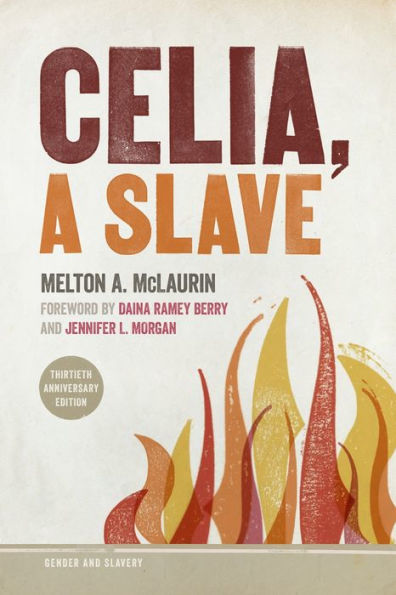Read an Excerpt
Chapter OneBeginnings
Robert Newsom seemed the ideal representative of the family farmers who in 1850 composed the majority of the citizens of Callaway County, Missouri. His life experiences, family relationships, and economic status made him seem so. Indeed, nothing in the public record indicated that Robert Newsom was anything other than what he seemed--a man who had labored hard and endured much for the measure of prosperity he had achieved; a good father who continued to contribute to the welfare of his children, all now themselves adults; a man who had gained the respect of his neighbors. In many respects he was the fulfillment of the Jeffersonian dream, the personification of the ideals that had led to the purchase of the territory in which he settled. He was, as were so many of his fellow Missourians, the selfsufficient yeoman farmer, secure because of the abundance that came from the land he owned, and which he helped to till.
The journey of Robert Newsom and his family to Missouri had been typical of that undertaken by many of his fellow citizens of Callaway County. His was among the many families to abandon Virginia in the second decade of the nineteenth century and trek westward to the newly created territories of the transmontane southwest. The promise of a better life took the Newsoms to Missouri sometime between 1819 and 1822. Like thousands of others who were fleeing the overcropped lands of the east, the Newsoms recognized the potential of the rich river bottom lands of the most recent addition to the Union. Robert had made his westward journey with his wife, whose name we do not know, and son Harry and daughter Virginia, bothof whom were born in Virginia. The method by which they traveled is unknown, but however they traveled it would have been an arduous journey for the family, and not without danger, especially for the children. Virginia would have been an infant, at most not more than two years of age; Harry would have been no more than seven. The rigors of travel on the western frontier would have exposed both children to accident and disease, whether the family journeyed overland through Kentucky or took the more likely route by flatboat down the Ohio and Mississippi to the burgeoning river port of St. Louis.
If they entered the territory from St. Louis, it is probable that Robert Newsom took his young family up the Missouri, a notoriously difficult river to navigate. Although European and American settlers had used the river for decades, until the second decade of the nineteenth century such traffic was haphazardly organized and risky in the extreme. Canoes and pirogues, often rafted in pairs, were frequently used on the river, as were mackinaws, flat-bottomed, high-prowed craft capable of only downriver voyages, and skinboats, flimsy, unstable craft made of buffalo hide that deteriorated rapidly. Keelboats were introduced to the Big Muddy only in 1811, when rival fur-trading companies launched expeditions on a race upstream on high spring waters. Not until 1819, two years after they appeared in St. Louis on the Mississippi, did steamboats ascend the Missouri.
At the time the Newsom family arrived in Missouri, all of these craft were still used on the river. If the family went inland on its waters, their financial situation would have determined the craft in which they traveled. Quite possibly the family ascended the river by steamboat, although such travel would have been expensive, as the fur company boats remained the only such vessels on the river. Chances are that the family traveled by keelboat, their vessel powered by muscular rivermen, some of whom may have plied their trade since the great race that inaugurated keelboat service on the Missouri. Although less likely, the Newsoms may have come upriver in a solid, serviceable pirogue, hewn from a single walnut or cottonwood log, their provisions strewn about its bottom, protected from hungry river ratsby a cat or two.
Regardless of their mode of travel, by the fall of 1822 Robert Newsom and his family had settled in southern Callaway County, in a section that would eventually become Fulton Township. The Newsom family was but one of many to immigrate to the region after lands there were opened for sale to the public in December 1818. Like many early settlers, Robert Newsom selected land along the timbered shores of a river or creek, a site that provided rich alluvial soils for crops, wood for building and for fuel, and an in- ` expensive means of transporting the crops he planned to raise and the products he hoped to purchase from the profits his sale of the harvest would bring. The site Newsom purchased was located on the Middle River, a minor tributary of the Missouri, some nine miles south of the locality that would eventually become the town of Fulton.
The Newsoms and their neighbors, who settled the farmlands along the banks of the Middle River, had come to Missouri in pursuit of prosperity and the more rewarding life they hoped prosperity would bring. Theirs was a dream both unique and common, individual and communal. Most, like the Newsoms, came from Virginia and North Carolina, a few from New York, Pennsylvania, and other northern states of the eastern seaboard. A surprising number came from Kentucky and Tennessee, the first of the transmontane states to send their restless citizenry further west in the relentless American pursuit of happiness. They had come on the rivers by keel and flatboat, in canoes and dugouts, on rafts of roughsawed planking nailed across fresh-cut logs. Overland they had come by cart and wagon, astride horses and mules. Many journeyed by foot, plodding mile after mile along widened footpaths that hardly deserved to be called roads. Seekers and dreamers all, they hoped to reach the western promised land, a land said to flow with milk and honey, a land such as their God had promised, and delivered, to the ancient Israelites.



